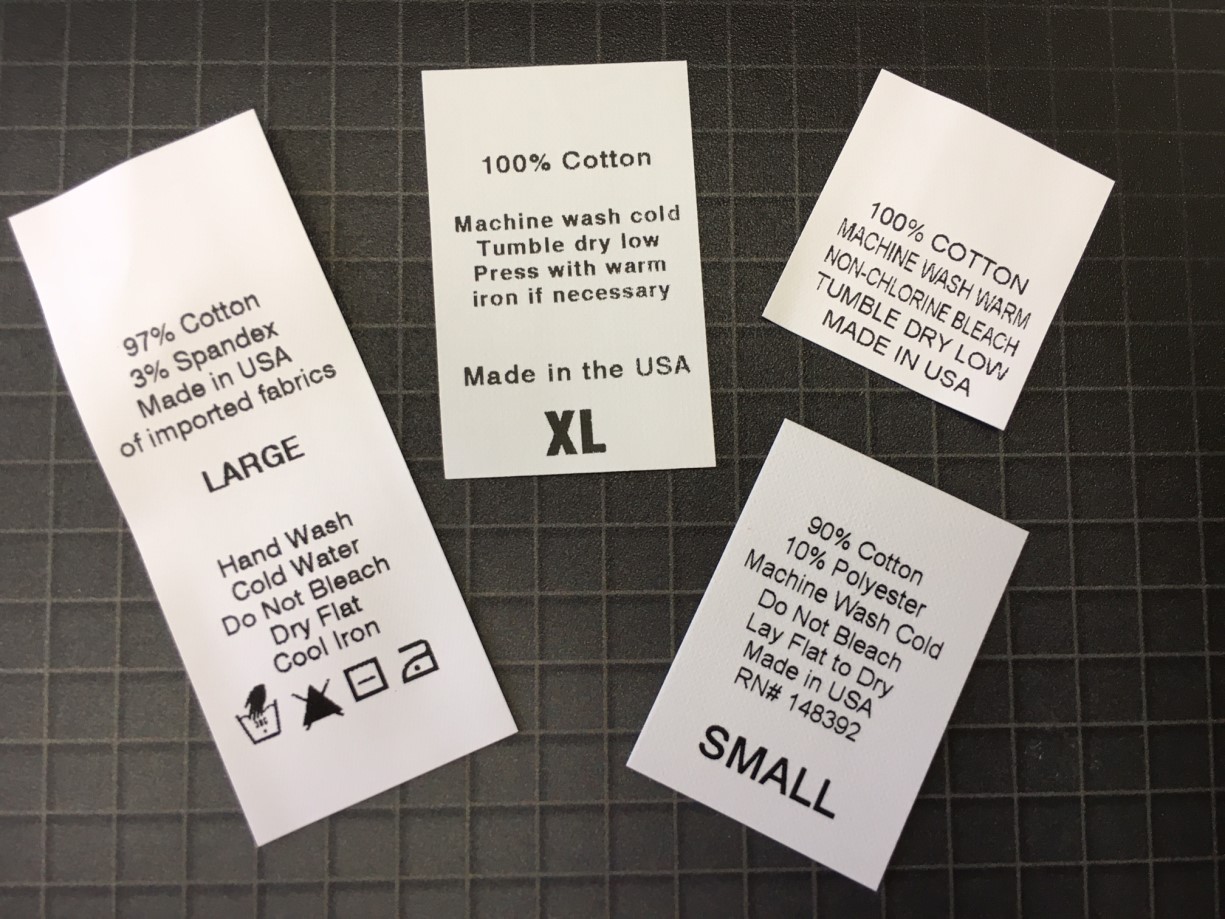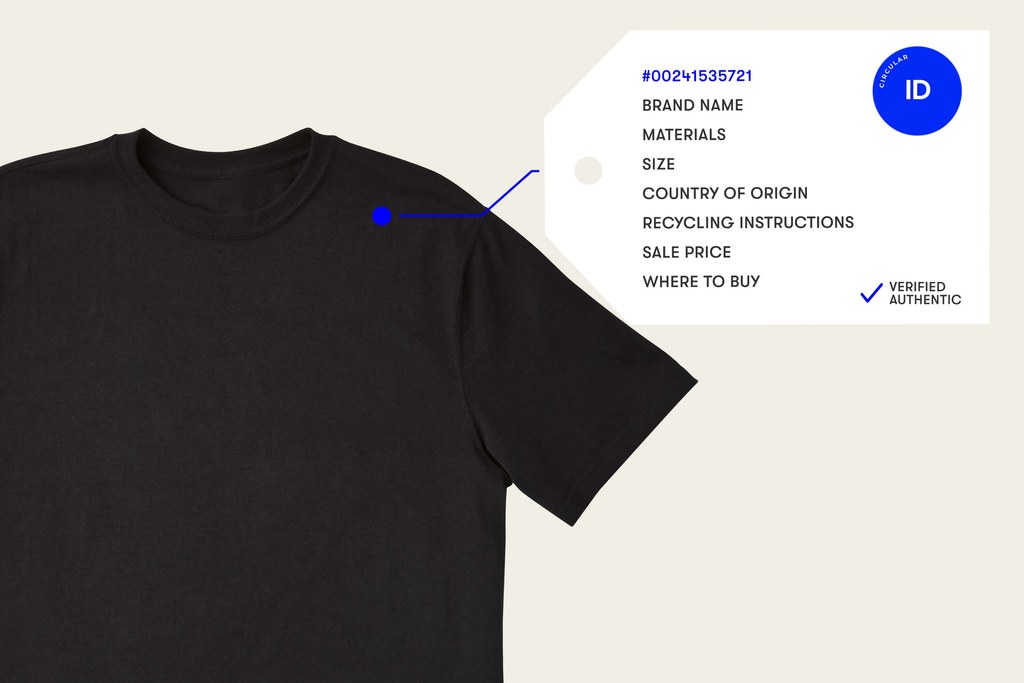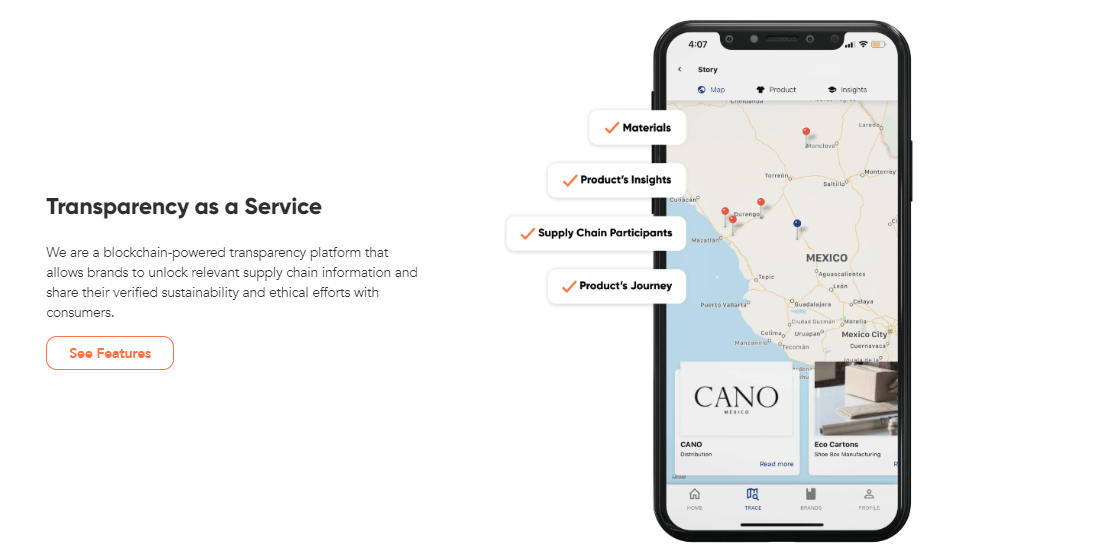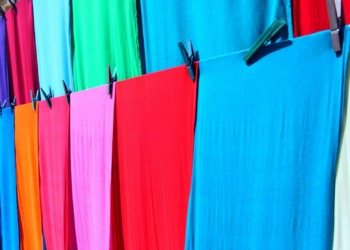Can we ever really know if the clothing we buy was ethically produced from end to end? Increasing interest in transparency and traceability throughout supply chains has focused attention on the entire garment life cycle. Regretfully, most brands still lack even basic information about the different tiered partners along this multilayered supply chain.
The information that is provided is often insufficient and in some cases misleading. Thoughtful consumers are left with more questions than answers. Companies hoping to capture these ethically minded consumers are starting to invest in programs and tools aimed at demystifying this long, convoluted journey but critics are pointing to the need for increased industry regulation.
Beyond the Label
The US Federal Trade Commission (FTC) requires that four pieces of information be included on a sew-in garment label. These include a Registered Number, fiber content percentages, care instructions and country of origin. The RN number or Registered Number is an identification number that is issued by the FTC to any company that manufactures, imports, distributes or sells products covered by the Textile and Wool Act.
The RN number is misleading, as it does not represent the many entities involved in the entire garment production cycle. The fiber content percentages do not speak to the chemicals or other additives employed during the cultivation, finishing and dying processes. Lastly, the country of origin fails to inform consumers of the conditions of the particular facilities used in the development of the garment, only the country where the garment is “made” or sewn into a final piece.
This obscures much of the supply chain used when turning fiber into a finished good. Many brands have begun adding “Designed in” before the “Made in” label to show that they are developing portions of products in countries with better track records on human and labor rights.
Again this can be misleading, as a design team can be a few people or a small department, while production teams can encompass hundreds of workers. Also, countries with stricter wage and labor laws can be home to questionable subcontracting practices and the use of “sweatshops”. Recently, Fashion Nova faced scrutiny for producing garments in illegal and exploitative facilities in Los Angeles that paid workers as little as $2.77 an hour.

Tools for Transformation
The Pledge
The Clean Clothes Campaign, Human Rights Watch and a coalition of other labor and human rights groups have released a new report entitled “Fashion’s Next Trend: Accelerating Supply Chain Transparency in the Garment and Footwear Industry”, which evaluates transparency in the industry as a whole and maps the progress of the 2016 Transparency Pledge.
The Pledge calls upon companies to disclose basic information about their suppliers such as company name and address. This alone does not ensure that suppliers are committed to ethical working conditions or sustainable practices, but it is a start towards consumers receiving more substantive product data.
Common Object / Sourcemap
Sourcemap is a company that creates products that help take companies to what they call “radical transparency”.
Sourcemap was launched out of MIT in 2005 and offers the first platform to manage multi-tier supply chains by tracking products from end to end. In November 2019, Sourcemap announced it was partnering with Common Objective, the sustainability centered sourcing and information network, to “help brands attain supply chain transparency” using Sourcemap’s open source technology.
Common Objective is hoping to encourage it’s 20,000 users to use Sourcemap’s tool to map their supply chains. Eileen Fisher, a sustainable fashion pioneer, has also used Sourcemap to internally track garments through the various production phases.

Circular ID
Circular ID hopes to aid in the fashion industry’s transformation into circularity by building a new standard for product information.
The company’s circular ID tag offers information specific to each individual garment such as dye process, origin information, recycling instructions and a log of “interaction data”. This log allows information to be stored for the entire lifecycle of the product and can serve as a standardized authentication framework for resale or recycle. Circular ID presents an amazing opportunity to use product information.
……………
Blockchain Success Stories
Blockchain technology has provided some of the most exciting tools in supply chain traceability.
Traceability differs from transparency in that it captures much more precise information about a particular ingredient or component, such as batch information like harvest date, purchase order data, and other operational information. The focus is less on mapping the entire supply chain and more on following the product/order as it moves through the production process.
Blockchain technology acts as an open ledger for each step in the production chain. A code affixed to a garment or tag can be scanned to access this ledger, allowing customers to view supplier and production activity from beginning to end. This technology has already been widely utilized in the food and pharmaceutical industries.

Martine Jarlgarrd / Provenance App
Designer Martine Jarlgarrd collaborated with the Provenance App to do just this sort of tracking.
Using the Provenance App, Jarlgarrd was able to track sustainable alpaca fleece from shearing at the farm, to spinning, knitting, and finally finishing in her London studio. In doing this Jarlgarrd was able to create a digital history of the garment’s journey. This was the world’s first garment with a unique ID providing location mapping, content, and timestamps from every step of the production. This information was all accessed through a “smart label” affixed to the garment.

Retraced
Retraced is a German startup that utilizes blockchain technology to collect data from supply chains. Information is collected on materials, environmental impacts and labor conditions.
Philip Mayer and Lukas Puender launched the company in 2018. The two owned an ethical footwear brand called CANO and were looking for a tool to help them communicate the story of their products to consumers. Finding the current offerings insufficient, they partnered with Oracle to create a tool that would accomplish this.
Their pilot went live in June of 2019. Last month, the company won the Deutscher Nachhaltigkeitspreis, a sustainability award given to German startups.
Blockchain technology offers an exciting opportunity to trace our products as they travel through the supply chain. A major limitation of this technology is that it remains largely unregulated with no universally acknowledged standardization or certification process in place.
Another vital component for traceability in the blockchain is stakeholder participation. Each step of the supply chain must be engaged in the process, which presents a sizeable challenge as many companies still have difficulty even identifying all tiers of suppliers involved in the development process.
Challenges and Calls for Regulation
Garment traceability requires a significant investment of resources. Many companies are reticent to spend the time and capital because financial returns are not immediate and often further investment is required. Tracing a garment through the entire supply chain is a vast and involved process. Companies need to involve stakeholders at all levels from farms to factories.
Another complicated layer that can obscure this kind of transparency is the use of intermediaries and other indirect sources. Overseas agents hired by companies to source products and negotiate with vendors often do not disclose all of their production partners. This leaves companies with little visibility beyond the point of contact with the agent.
An increased focus on supply chain visibility is in direct opposition to the current fast fashion model that can find companies in a race to the bottom placing primary value on cost savings and speed. This has led industry critics to call for increased regulation into the disclosure of supplier and product information.
Forcing companies to disclose supplier and product information pushes them to publicly stand by their partners and development practices. This allows the customer to see which companies are truly living their values.
Editors Note: The opinions expressed here by Impakter.com columnists are their own, not those of Impakter.com
Featured Image credit:Naila Karamally










